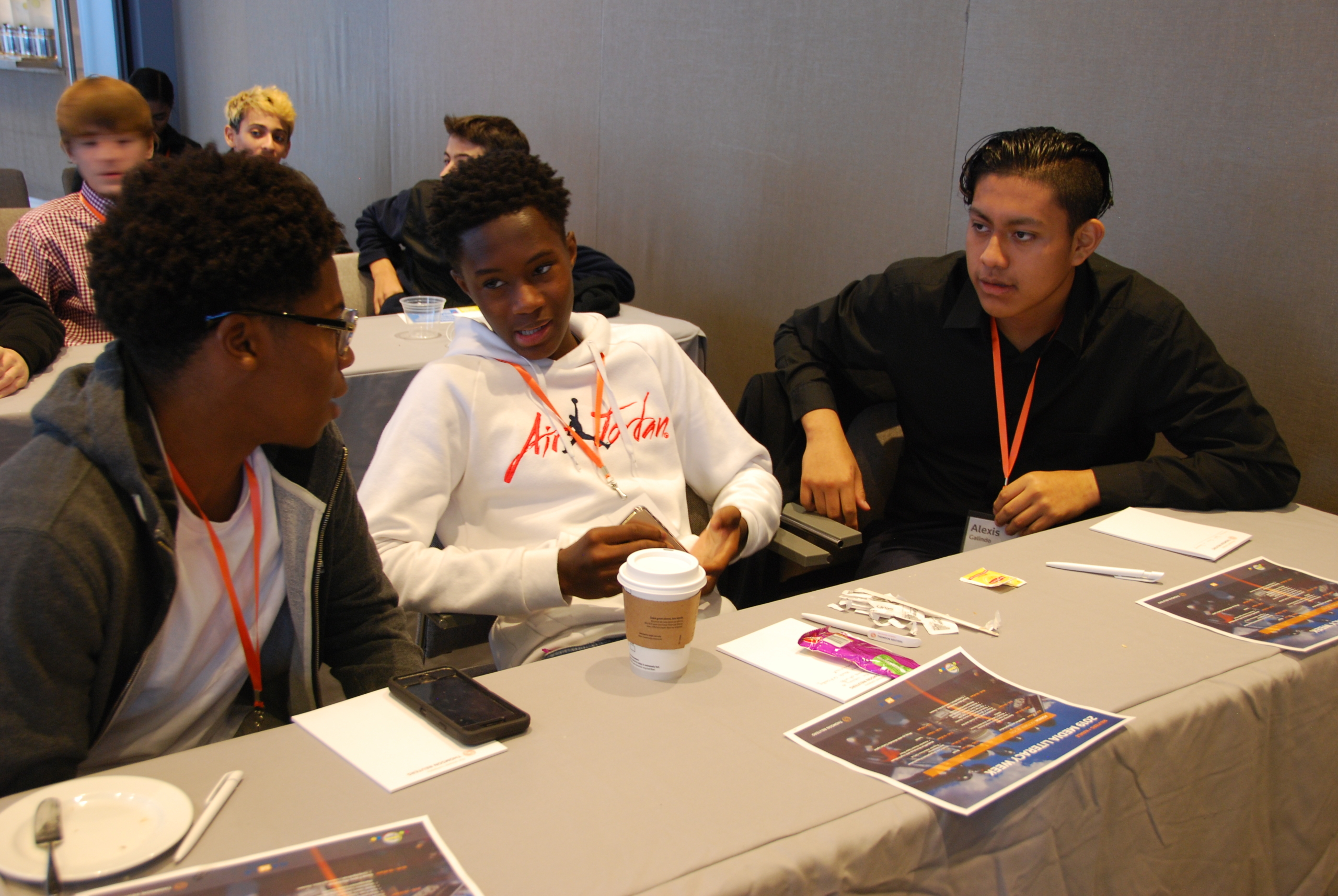Sign up for the daily CJR newsletter.
Much has been made of the Washington Post’s presence on TikTok, the popular video-sharing app. Andrew Beaujon, at the Washingtonian, called the account “gloriously weird.” Lindsey Ellefson, at The Wrap, called it a “must-follow.” Alex Mahadevan, of Poynter, noted that after a TikTok video in which Dave Jorgenson, the account’s creator, ate raw pumpkin-spice Spam (apparently just for the sake of doing it), searches for pumpkin-spice Spam spiked on Google. Other news organizations have jumped in, too: The Florida Times-Union now has a TikTok account, along with the Dallas Morning News and NBC. “News organizations are desperate to hook the next generation,” Dan Primack said on the Axios Pro Rata podcast. “TikTok could be the means to that end.”
The other day, teens weighed in. At a conference hosted at the headquarters of Thomson Reuters, in midtown Manhattan, by the National Association for Media Literacy Education, New York City high school students met journalists, educators, and Facebook representatives. At the end of the day, a few students sat in conference chairs, assessing news organizations’ attempts to reach them. “I follow some reporters on Snapchat,” Griffin Must, a junior, said. “I think people our age have short attention spans. We’re used to social media.” A friend agreed; but it was weird, he thought, how many times the event’s presenters brought up TikTok. “It’s just not a narrative form,” he said.
Other students milled in the back of the room, drinking leftover free sodas. “For me, honestly, to be engaged—just give me the facts straight,” Jubahed Qayum, a junior at Beacon High School, said. “I think teenagers are a lot smarter than adults give them credit for,” he went on. “Treat me like an adult without throwing in funny memes, and I’m ready to meet you like an adult.”
His classmate Syeda Nushrat nodded in agreement. When grown-ups discuss social media, she said, “It borderlines into cringey-ness.”
“It’s like you’re really really trying too hard to relate,” Qayum said. “It just comes across as uncomfortable.”
Nushrat winced, thinking of times when journalists have co-opted aspects of internet culture they’ve failed to understand. “Like, remember when that Fox reporter tried to do popular dances?” She meant in May, when Nick Kosir, a Fox meteorologist, tried to get in on a viral dance craze called the “Git Up” challenge. Nushrat shuddered, remembering the video. “Ugh,” she said.
Neither had seen the Washington Post TikTok account. When offered a viewing, they watched a clip of Jorgenson “time traveling” in a space suit to tell the future of TikTok—it’s the video pinned to the top of his Twitter feed. It begins with Jorgenson seated at a desk, opening a print newspaper in his lap. Within seconds, a masked silver-clad spaceman appears on the screen. “What year is it?” the spaceman asks. “2018,” Jorgenson replies. He and the spaceman have a brief back-and-forth about TikTok. “It’s going to be your job,” the spaceman says. Jorgenson appears skeptical; then the spaceman removes his mask to reveal Jorgenson’s own face, making ominous eyes at the camera. “You’re in one right now,” says Jorgenson-from-the-future. Qayum and Nushrat laughed. “That’s pretty funny,” Qayum said.
The Post TikTok account has more than 192 thousand followers; according to Media Kix, a marketing agency, 66 percent of TikTok users are under 30 years old, but the Post doesn’t know exactly how many in its TikTok fan base are teens. (Jorgenson is aware of the dangers of cringey-ness, he told me: “When I was a freshman in college, my mom suddenly got Facebook and added me, and I was just completely horrified.”)
Ultimately, young people want the same thing from news organizations that adults do: the truth. “It’s not even about just, ‘treat me like an adult,’” Nushrat said. “Treat me like a human being who has her own views and opinions. If I’m wrong, educate me.”
ICYMI: At a private school in East Hampton, the best media literacy program money can buy
Has America ever needed a media defender more than now? Help us by joining CJR today.







